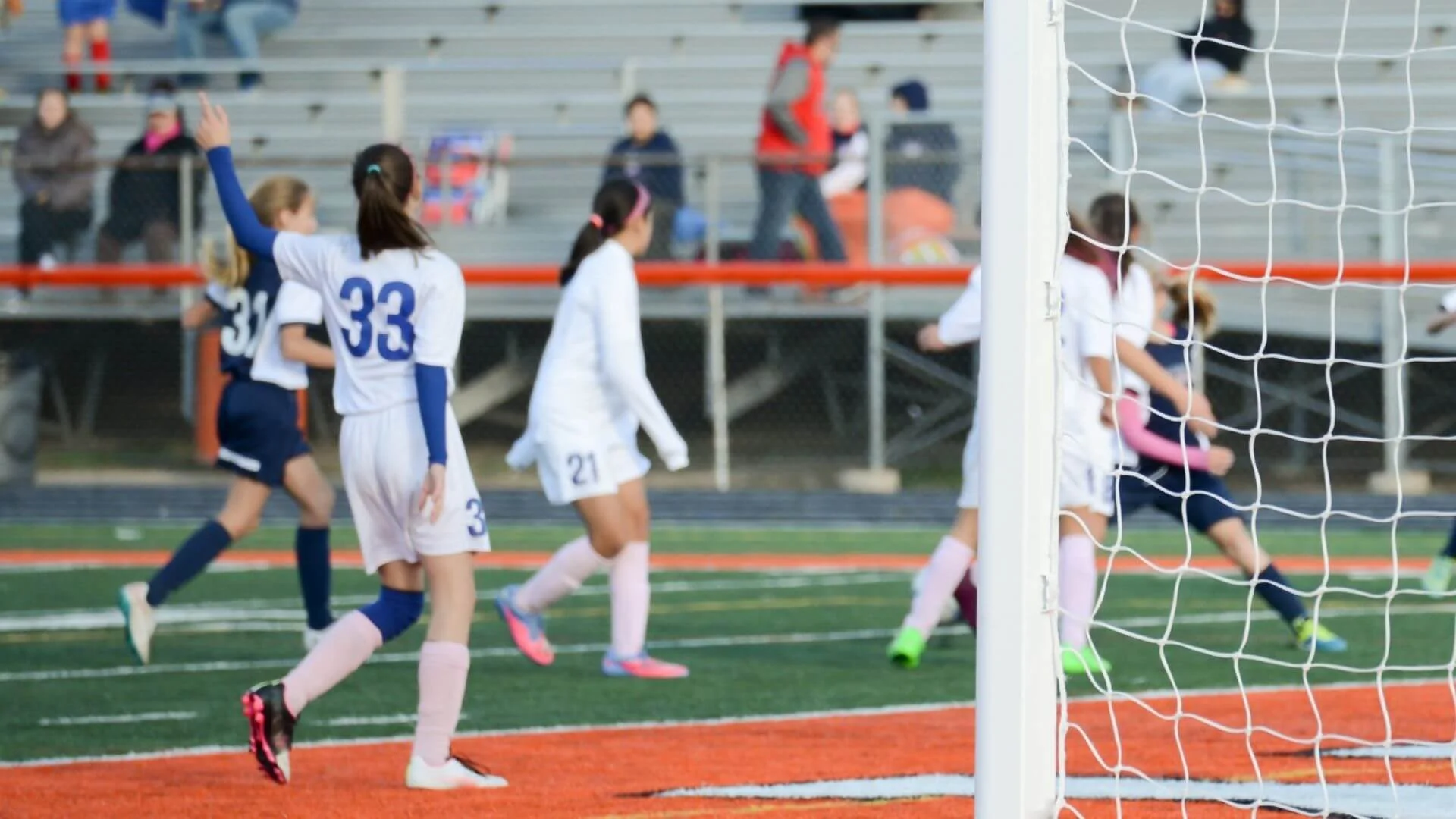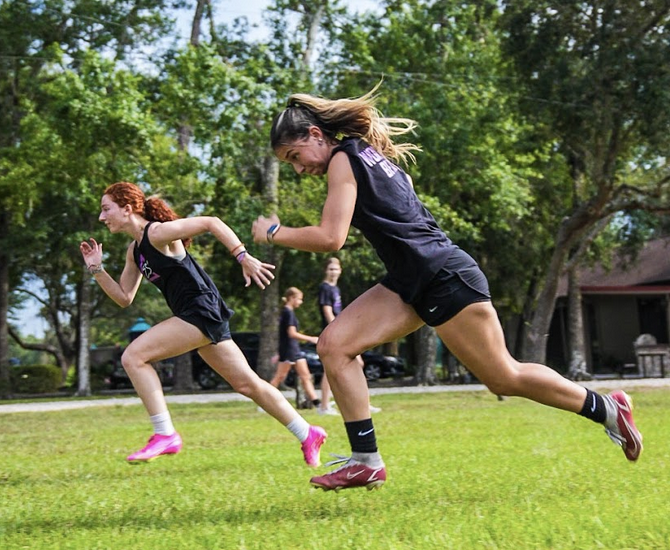The Keys to Improving Speed in Girls Soccer Players
It’s not enough to say, “I want to get faster.” If you want to improve speed, you must make time for it.
Speed kills. In soccer, female athletes can never get too fast. Speed changes the game. It separates the winners from the losers. Whether it is blasting by an opponent, winning a one-on-one, or running off the ball to score a goal on a counterattack, speed plays a role in the most ecstatic moments in sports.
Speed is a physical quality the best athletes possess. The fastest athletes are the most exciting to watch. They don’t let their team down in the final minutes. They are powerful. As speed coach Tony Holler says, “speed raises the tide of all boats.”
Speed training stimulates fast muscle firing, which applies to power and explosive movements such as jumping, cutting, accelerating, and changing direction. Every athlete must speed train, and the ones who do it consistently are also the healthiest. More than Nordic hamstring curls and deadlift variations, sprinting is one of the best hamstring-strengthening exercises for female soccer players. The muscle firing rate is unmatched, which becomes important for girls who want strong hamstrings that safeguard the knee.
Speed Development is a Process
One of the greatest speed coaches of all time said, “I get so sick of those snake oil salesmen who advertise quick fixes to improve speed. Speed training is a process. Speed grows like a tree.” You probably guessed that Tony Holler said this one. I’m a huge fan of his work because he has over two decades of experience working with the best track athletes in the world. I don’t know about you, but I’m going to listen to the coaches who have developed the world’s fastest athletes.
Speed is a process and takes patience. Speed takes discipline. It must be prioritized. If anyone promises a quick fix, run the other way.
Training Speed
30% of speed can be trained. This is amazing news; every girls’ soccer player should take advantage of this. Just because a girl’s genetics aren’t great doesn’t mean she can’t improve her speed. She absolutely can make serious gains. The human body is incredibly adaptable when provided with the proper stimulus for many years in a long-term physical development pathway. Speed can be “hardwired” with consistent sprint training year-round.
Even better, a girl who is just embarking on a speed training journey is more likely to experience more gains when she starts just before her growth spurt. If she spent time chasing, sprinting, and playing during childhood, even better. She’s already ahead due to a strong foundation.
Since speed development takes time, young girls’ soccer players must develop good habits. When they’ve played enough in their childhood and built the necessary athletic skills to be able to express speed during adolescence, they’re ready for a more formal plan that is to be taken seriously and done religiously. To start, they need to commit to 2x a week of speed work in the off-season.
Of course, one day of training is better than nothing (especially in season), but they will see progress a lot quicker if they train twice a week when they have off from travel games. Once they’ve developed the habit of 2x a week speed, they can add a third day to bolster their gains even more.
Simplicity is the foundation of any speed workout. A typical workout should only be a handful of plyometric and jump drills, mechanical work done with intent (don’t just go through the motions!), and then a few max velocity sprints with a 5+ minute rest in between. Ideally, a speed workout should be 15 minutes of actual hard work, with the other minutes spent standing around and resting. The goal isn’t to tire an athlete and look “busy” the entire session. Instead, they should feel “lit up” after a speed workout, with every effort done with max output.
Short duration with intensity in speed training sessions is best.
Intensity with Speed Training
Think of all the adjectives that describe the best athletes from a physical standpoint. Maybe you said “fast,” “explosive,” and “powerful.” Very rarely do people describe the best athletes as “well, they’re great long-distance runners!”
The best athletes leave their opponents in the dust. If we want to build athletes into explosive predators, we must train them this way. Speed and intensive plyometric work should not last more than six seconds. Mind you, this six seconds of work should be the highest possible output. Even when an athlete performs a high knee drill, it needs to be done with intensity so it trains the Central Nervous System to go fast. Any drills that go over six seconds get into the alactic anaerobic system and are no longer the ATP-CP system needed for speed development. Certainly, alactic work has its place within high performance, but this is solely for the conditioning piece in the coming chapters.
When it comes to true speed training, we have to keep the main thing the main thing.

Unfortunately, there’s a lot of nonsense out there on speed training. Everyone thinks they’re doing it, but they’re far, far from true speed work. For the younger ages, ages 6-12, this is all about building the base of movement skills, chasing, racing, and fun. Nothing else. Formal mechanics and data collection can wait.
For the older age groups, ages 12.5 (post-growth spurt) and up, there’s more structure, timing, and tracking. If a trainer doesn’t have the following non-negotiables in their speed program, run the other way:
- Mechanics, jumps, sprints
- All efforts are less than 6 seconds
- All efforts are max intensity
- All rest times for 1-2 minutes between jump and mechanic drills, and 5 minutes between max velocity sprints
- All workouts are done fresh (speed development is physiologically impossible when an athlete is sore and tired): think about the fastest animals in the animal kingdom. Cheetahs sleep more than half of the day, then go out and hunt. They are one of the top predators in the animal kingdom. Athletes must be well rested in order to be powerful predators.
Here are jump and sprint drills to try:
Speed training takes dedication to explosive movements and longer rest times. Yes, it sounds simple, but not many are willing to do it. Train speed relentlessly and watch your performance soar.
ABOUT THE AUTHOR

Erica Suter is a former college 3x All-American soccer player from Johns Hopkins University. She is giving back to the game and to female soccer players as a full-time performance coach. She holds a Master of Science in Exercise Science and has been helping girls with speed, agility, strength, and conditioning for over 12 years in the ECNL, GA, and NPL.
Her players have gone on to play college soccer at UNC, University of Maryland, Pittsburgh, Northwestern, West Point, University of South Florida, University of Charleston, MIT, Johns Hopkins, Carnegie Mellon, Rutgers, Towson University, and more.
Get her
Follow Erica on Twitter: @fitsoccerqueen
Check out her podcast: The Soccer Queens Podcast
_
GIRLS SOCCER NETWORK: YOUR SOURCE FOR GIRLS SOCCER NEWS













